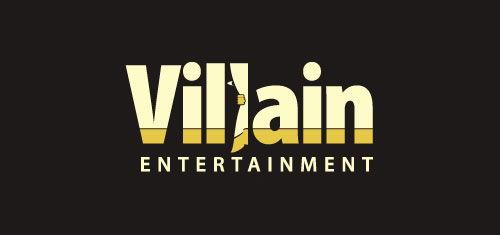Show:
5 Psychological Tricks That Can Help Your Logo Stand Out
Oftentimes business owners fail to truly grasp the importance of their logo. They want something cool and interesting that people enjoy looking at. But they rarely consider the psychological ramifications involved in making your own logo.
Believe it or not, certain psychological aspects of logo will make potential customers and buyers gravitate toward your company. Colors, fonts, and visual cues will all play a role in whether or not someone decides to do business with your company.
You have to create the perfect logo to put buyer psychology in your corner. Otherwise you’re missing a huge opportunity to attract buyers for your products and services because your logo fails to do its job correctly.
With that in mind, we will share five psychological tricks and hacks that will help your logo stand out in the crowd. If you implement these suggestions, your logo will attract potential customers and buyers willing to whip out their credit card and spend money on your products and services in no time flat.
1. Color Psychology Is the Name of the Game When Designing Your Company Logo
The right logo will represent your brand in a synonymous and synchronous fashion. Apple and McDonald’s are two iconic brands that are defined by their logo. We look at their logos and instantly recognize these companies. We realize that they are trustworthy businesses that we know and love and count on to deliver excellent products and services.

Believe it or not, many logos possess a meaning typically hidden from the general public. This meaning usually has something to do with their backstory, their history, or maybe even a visual pun that the logo designer found clever and enjoyable or maybe it’s a hint to a tech startup.
Choosing the right color for your logo is also necessary when telling your company’s story. Everyone in the developed world recognizes the iconic green and white coffee cups at Starbucks. And we all recognize the beautiful purple wrapping when we purchase a Cadbury crème egg.

It’s important to know that the color of your logo will help define your brand identity. With Fortune 500 companies, many have chosen to use the color blue as a popular design choice. This color is safe, sophisticated, and it will not offend anyone. Many of the top health, tech, insurance, and finance companies use blue in their logos.
Red is another great choice that many Fortune 500 companies incorporate. Not only is it a gorgeous color, but it also inspires customers to buy products believe it or not. Many studies show that the color red actually makes people spend money. So, if you’re designing a logo to increase sales you should consider using this color as part of your logo design.
2. Attractive Visuals Influence Buyer Decision-Making Processes
Having an attractive logo is incredibly important from a marketing standpoint. A good design means that your potential customers are going to have a great first or lasting impression when they think about your products and services.

There are two important takeaways to consider when creating the visual appeal of your logo. They include:
- Visuals influence the decision-making process. In the past during prehistoric times, if a Neanderthal saw black and yellow tiger stripes approaching him, he’d run as fast as he could to get out of danger. Those colors immediately influence his decision-making process. Certain images can also determine whether or not customers feel you are trustworthy and great visuals make buyers want to spend money with your company.
- Gorgeous visuals create a positive impression. You obviously want your customers have a good impression of your company. You want them to feel calm, relaxed, and happy when they think about your business. Attractive visuals create these feelings, so keep that in mind.
3. Designs Should Portray Loss Aversion over Potential Gain
Whether you know it or not, people are more concerned with potentially losing what they already have over gaining more. If you can incorporate this into your logo design, it can convince your prospects that you’re the best company to meet their needs.
As an example, if you own a retail store you can create a logo based around savings. Remember, your customers would rather save $20 and avoid a loss more than they’d rather earn $20 as part of a cashback incentive. If you can incorporate this psychological aspect into your logo creation, you’ll make more sales and gain more customers because people are more interested in avoiding loss than potential gain.
4. Communicating Visually is Part of Our Universal Language
Graphic designers truly understand the value of visual communication. And they realize that there’s more to life than communicating with mere words. Very similar to verbal communication, the message you get across with your visuals is only as effective as your ability to speak the visual language.

Top-quality designers realize that many visual elements provide deeper meaning. They realize that certain visual placement, shapes, and colors can change an image and its entire meaning. So correctly using visual elements has deep roots in psychology.
One example is the hidden meaning behind the color red. Many people look at the color red as a warning because they associate it with blood. That’s why emergency service organizations use red sirens, paint, and red text on their emergency service vehicles as a warning to alert people to potential danger.
5. Simplicity Is the Hallmark of an Effective Logo
Some designers like to create elaborate and convoluted logos for businesses. This is the wrong approach because the design can be too confusing for people to understand what it represents.
Remember, the most effective designs are usually the simplest in nature. Think about the McDonald’s golden arches, the apple with a chunk bitten out of the side for Apple, and the Nike swoosh as great examples of simple yet effective designs that really promote the company they represent.
Recap
You now understand that psychology plays a major role in the logo design creation process. You realize that color plays a huge part in how customers respond to your logo. You see the value of creating a simple yet effective design that isn’t too confusing. And you understand the value of visual communication, choosing loss aversion over potential gain, and picking attractive visuals that your potential customers will gravitate toward.
Incorporate these psychological tricks and hacks when creating your logo design and you’ll have a much more effective image moving your company forward into the future.


 Return to Previous Page
Return to Previous Page








